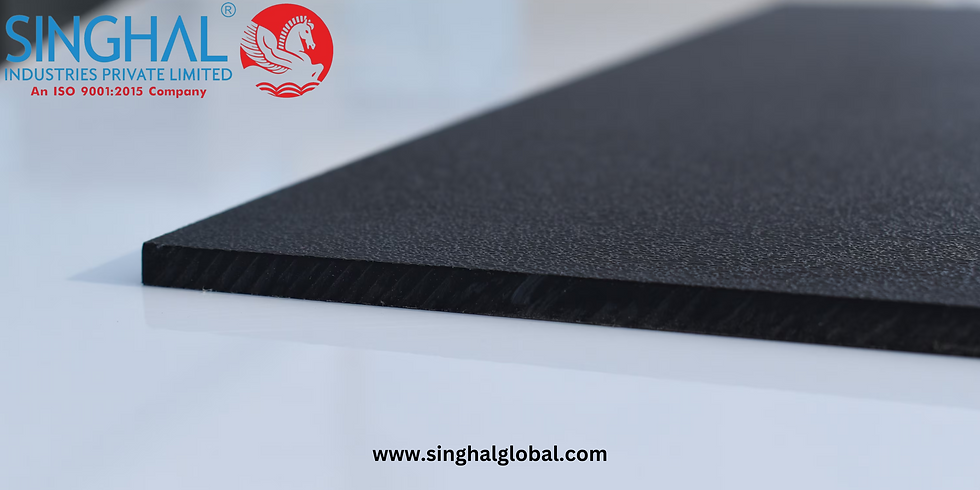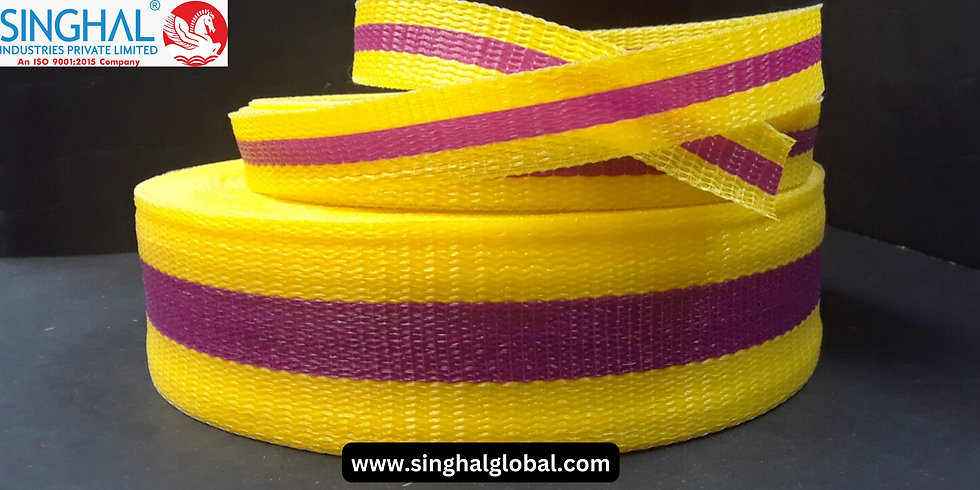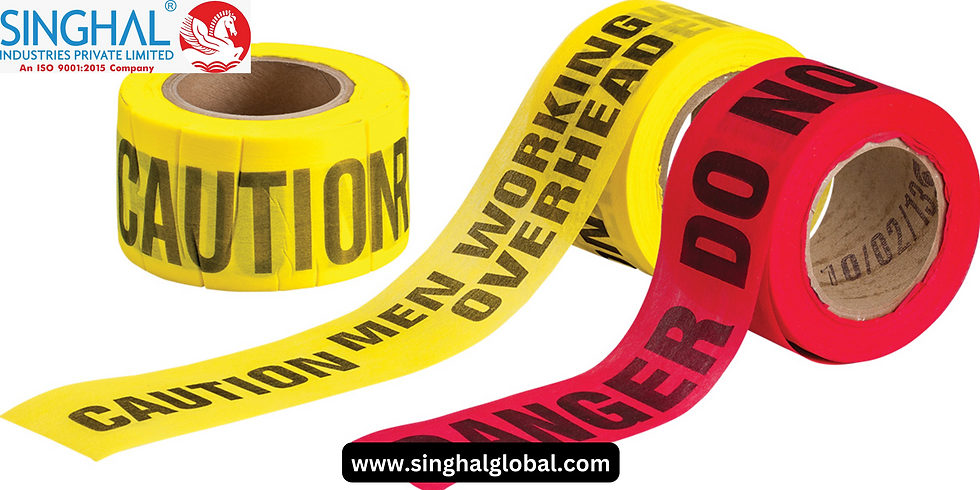Sturdy Support: The Ultimate Weight Bags for Pipeline Precision
- Akash Pathak
- Aug 30, 2024
- 5 min read

Pipelines, the lifelines of various industries, traverse vast landscapes to deliver essential resources like oil, gas, and water. Ensuring the stability and integrity of these pipelines is paramount for safety, efficiency, and operational continuity. One often overlooked but critical component in maintaining pipeline precision is the use of weight bags. These weight bags, specifically designed to support and stabilize pipelines, are integral in preventing movement, mitigating environmental impact, and ensuring structural integrity. This article delves into the significance of weight bags, particularly the Heavy-duty pipeline weight bags, and their crucial role in construction projects.
The Role of Pipeline Support Weight Bags in Construction
Pipeline support weight bags are indispensable tools in construction and pipeline installation. These bags are strategically placed along the pipeline to provide counterbalance and stability, particularly in areas prone to soil erosion, flooding, or seismic activity. During the construction phase, maintaining the alignment and positioning of pipelines is crucial to prevent future issues like leaks, ruptures, or misalignment due to environmental factors. Pipeline weight bags for construction are designed to meet these challenges, providing a robust solution that ensures the pipelines remain securely in place.
These weight bags are often filled with materials like sand, gravel, or specially formulated compounds that provide the necessary weight to anchor pipelines effectively. Their design allows them to conform to the pipeline's shape and the surrounding terrain, distributing the weight evenly and reducing stress points. This adaptability is crucial in diverse environments, from deserts to wetlands, where varying conditions require a tailored approach to pipeline support.
Pipeline Weight Bags: Built for the Toughest Conditions
Pipeline weight bags are engineered to withstand the most challenging conditions. In environments where traditional anchoring methods may fail, these weight bags offer a reliable alternative. Constructed from high-strength, weather-resistant materials, they are designed to endure extreme temperatures, UV exposure, and chemical exposure. This durability ensures that the weight bags remain effective over long periods, reducing the need for frequent replacements and maintenance.
In addition to their resilience, heavy-duty pipeline weight bags are also designed for easy handling and installation. They often come with lifting loops or straps, allowing for quick placement and adjustment using standard construction equipment. This ease of use not only speeds up the installation process but also enhances safety by minimizing the need for manual handling, reducing the risk of injuries.
Choosing the Right Pipeline Weight Bags for Your Project
Selecting the right pipeline weight bags for construction projects involves several considerations. The choice depends on factors such as the type of pipeline, the environmental conditions, and the specific requirements of the installation site. For instance, in areas prone to flooding or soil erosion, heavier and more robust weight bags may be necessary to counteract the forces that could displace the pipeline. Conversely, in more stable environments, lighter bags may suffice.
The material used in the construction of the weight bags is also a critical factor. Bags made from high-density polyethylene (HDPE) or other reinforced polymers offer superior resistance to environmental degradation. Additionally, the filling material should be chosen based on its availability, weight, and cost. Sand and gravel are common choices due to their affordability and effectiveness, but other materials like concrete or specialized compounds may be used for specific applications.
Environmental Considerations and Impact of Weight Bags
The use of pipeline weight bags extends beyond structural support; they also play a role in environmental conservation. Properly placed weight bags can help prevent soil erosion, preserve natural habitats, and minimize the impact of pipeline installation on the surrounding ecosystem. This is particularly important in sensitive areas such as wetlands, where traditional anchoring methods could cause significant ecological disruption.
Moreover, some weight bags are designed with biodegradable materials or eco-friendly fillings, which reduce their environmental footprint. These innovations are part of a broader trend towards sustainable construction practices, where the goal is to balance industrial needs with environmental stewardship. By choosing the right Pipeline weight bags for construction and employing them correctly, construction projects can mitigate their impact on the environment while still achieving the desired stability and support for pipelines.
Innovations in Pipeline Weight Bag Technology
Recent advancements in technology have led to the development of more sophisticated pipeline weight bags. Innovations such as smart weight bags equipped with sensors are now being explored. These sensors can monitor the weight distribution and detect any shifts or movements in real-time, providing valuable data that can be used to assess the condition of the pipeline and the surrounding environment. Such technologies represent a significant leap forward in ensuring pipeline integrity and reducing the risk of failure.
Additionally, modular weight bags are becoming increasingly popular. These bags can be connected or stacked to create a customizable solution that meets specific project requirements. This modularity allows for greater flexibility in installation and provides a scalable solution that can be adjusted as the project evolves.
Case Studies: Successful Implementations of Pipeline Weight Bags
Several notable projects have demonstrated the effectiveness of pipeline weight bags in maintaining pipeline stability and precision. For example, in a major pipeline project in a flood-prone region, the use of heavy-duty pipeline weight bags was instrumental in preventing displacement during a significant flood event. The weight bags, strategically placed at vulnerable points along the pipeline, provided the necessary support to keep the pipeline securely anchored, preventing potential environmental and economic disasters.
In another project, lightweight, eco-friendly pipeline weight bags were used to stabilize a pipeline passing through a protected wetland area. The choice of these bags helped minimize environmental impact while ensuring the pipeline remained secure. The success of this project underscores the importance of selecting the right type of weight bag based on the specific conditions and requirements of the installation site.
Future Trends and Developments in Pipeline Support
The future of pipeline support is likely to see continued innovation and improvements in weight bag technology. With growing emphasis on sustainability and environmental responsibility, we can expect to see more weight bags made from recycled or biodegradable materials. Additionally, advancements in sensor technology and data analytics will likely lead to smarter, more efficient solutions that provide real-time monitoring and feedback.
Furthermore, as industries continue to expand into more challenging and remote environments, the demand for robust, heavy-duty pipeline weight bags will increase. Manufacturers will need to focus on developing products that are not only durable and reliable but also easy to transport and install in difficult terrain. The integration of technology and innovative design will be key to meeting these challenges and ensuring the continued safety and efficiency of pipeline operations.
Conclusion
In the complex world of pipeline construction and maintenance, pipeline support weight bags play a vital role in ensuring safety, stability, and efficiency. From heavy-duty Pipeline support weight bags designed for the harshest conditions to eco-friendly options suited for sensitive environments, these tools are indispensable in achieving pipeline precision. As technology continues to evolve, the future promises even more innovative solutions that will enhance the stability and integrity of pipelines, ensuring they remain a reliable backbone for our industries.
Frequently Asked Questions (FAQs)
1. What are pipeline support weight bags, and why are they important?
Pipeline support weight bags are specially designed bags filled with materials like sand, gravel, or other compounds, used to stabilize and secure pipelines. They are crucial in maintaining the alignment and position of pipelines, preventing movement, and ensuring the structural integrity of the pipeline network, especially in challenging environments or during natural events like floods or seismic activity.
2. How do heavy-duty pipeline weight bags differ from regular weight bags?
Heavy-duty pipeline weight bags are constructed from high-strength, weather-resistant materials, designed to withstand extreme conditions such as high temperatures, UV exposure, and chemical interactions. Unlike regular weight bags, which may be suited for more stable environments, heavy-duty bags are engineered for use in harsh conditions where extra durability and resilience are required.
3. Can pipeline weight bags be used in environmentally sensitive areas?
Yes, pipeline weight bags can be used in environmentally sensitive areas. In fact, they are often preferred in such locations because they provide a low-impact solution for stabilizing pipelines. Some weight bags are made from biodegradable or eco-friendly materials, further reducing their environmental impact and aligning with sustainable construction practices.



Comments